On June 25, as India’s GI-tagged Kolhapuri chappal featured in Prada’s Spring/Summer 2026 show in Milan, it made headlines for all the wrong reasons. Where was the credit? In Maharashtra’s Kolhapur, over 10,000 artisan families have been crafting these chappals by hand for generations. Famous for their use of vegetable-tanned leather, intricate braiding techniques of the toe loops, and use of indigenous designs, they also received the GI tag in 2019. But has this tag ever stopped a luxury fashion label from cultural appropriation? In 2023,
Louis Vuitton launched a range of silk scarves resembling Banarasi brocade and fast fashion major Zara has been notorious for using Indian textiles and prints on their apparel.
An artisan at Aprajita Toor. Photo: Special Arrangement
As the news went viral on social media, in Kolhapur, Dileep More — who hails from a family that crafts Kolhapuris — took to Linkedin to vent. ‘India’s iconic #handcrafted leather sandal, reimagined and now selling for over ₹1 lakh a pair. Yes, the same design that’s been handcrafted for generations by artisans in #Kolhapur…But there was no mention of India. No nod to the artisans. No acknowledgment of the cultural roots’, he wrote. With a Ph.D from IIT Bombay, Dileep returned to his roots as a third-generation entrepreneur and kickstarted Korakari in 2014 and works with over 200 artisan families from Kolhapur.
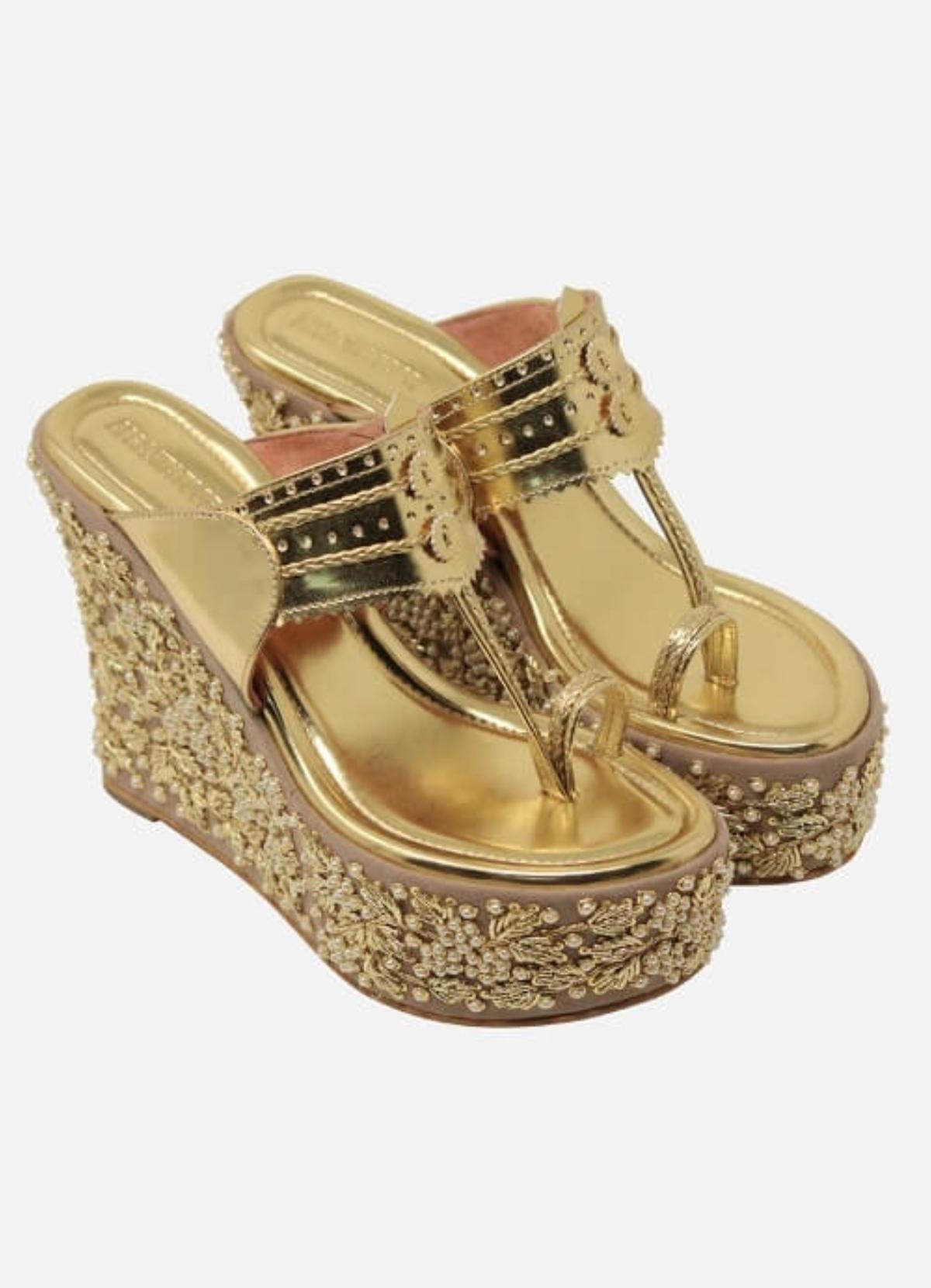
A design at Aprajita Toor. Photo: Special Arrangement
While these artisans, he says, are “far away from the news of the Prada runway”, Dileep, 47, says credit is due. “Prada should have given the artisans credit and acknowledged that it is a GI-tagged product. Their description of the sandal used on the runway is vague but the entire aesthetics (look, design, etc) is that of an original Kolhapuri,” he says, “When such brands recognise the craft and its makers, even artisans feel proud.”
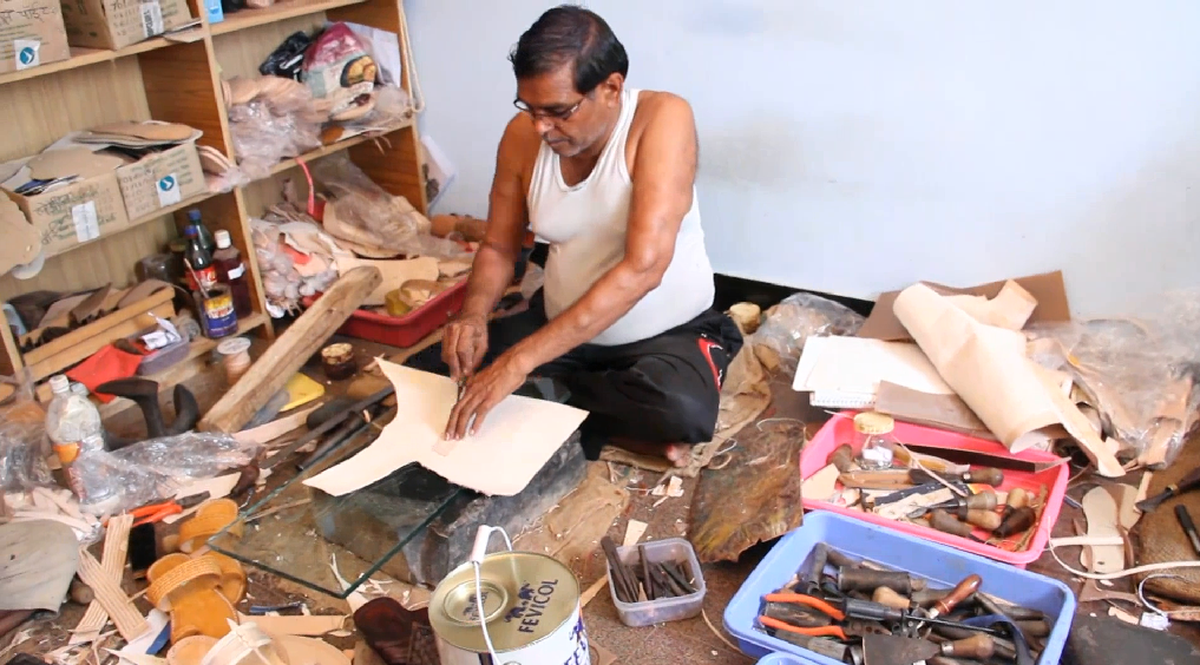
An artisan at Korakari. Photo: Special Arrangement
How do they make a Kolhapuri chappal?
Preparing the base
Leather selection: A thick leather hide is selected.
Front layer: The leather cloth is cut to shape for the upper.
Vanvat: A thin cotton or leather lining is added inside for comfort and finish.
2. Sole assembly
Layering: Two or more leather soles are cut and joined together.
Kala mitti application: A traditional black mud sticky paste (kala mitti) is applied temporarily to hold the layers in place.
Hammering: The sole is hammered thoroughly to toughen the leather and compress the layers.
3. Stitching the sole
The joined soles are stitched by hand around the edges using a strong white thread.
4. Chaprega (decorating the surface)
Artisans create front and back designs using punches and hammers.
Small metal tools are used to stamp traditional patterns like elephants, birds, and geometric borders.
5. Making the strap and toe loop
Leather Cutting: Thin leather strips are dyed, softened, and cut into shape.
Folding and lining: The strap is folded for strength, often with inner reinforcement.
Punching the toe hole: A toe loop is attached and stitched firmly.
6. Final assembly
The upper strap and toe loop are stitched and fixed to the sole.
Additional hammering and edge smoothing is done for finish and comfort.
Polishing and colouring
The chappals are polished in natural or dyed colours such as brown, tan, mustard, etc.
Tightly-knit community
Dileep explains how despite having a high demand — both domestically and internationally — the Kolhapuri chappal faces resistance from first-timers. “They have a hard sole, and take time to adjust to one’s feet,” he says, adding that he overcame these challenges by crafting variants with cushioning, and also introducing more colours such as reds and blues to keep them “trendy”. At Korakari, close to 10,000 pairs are made every month, and also sold online. “Brands such as FabIndia, Myntra, and Amazon also source from us.”
At Korakari, close to 10,000 pairs are made every month. Photo: Special Arrangement
Rajkumar Jaisinghrao Powar, 47, also a third generation artisan from the city, has had his unit since the 1950s. Unlike Dileep, he has kept his business local and supplies to stories in Pune, Mumbai, and Nagpur. “Working with big brands requires large investments, and working with a fixed price which is not ideal when artisans are involved,” says Rajkumar, who has 14 artisans in his unit. In a day, each artisan can craft up to three pairs, and these are sold anywhere between ₹1,000 to ₹6,000, depending on the technique and design.
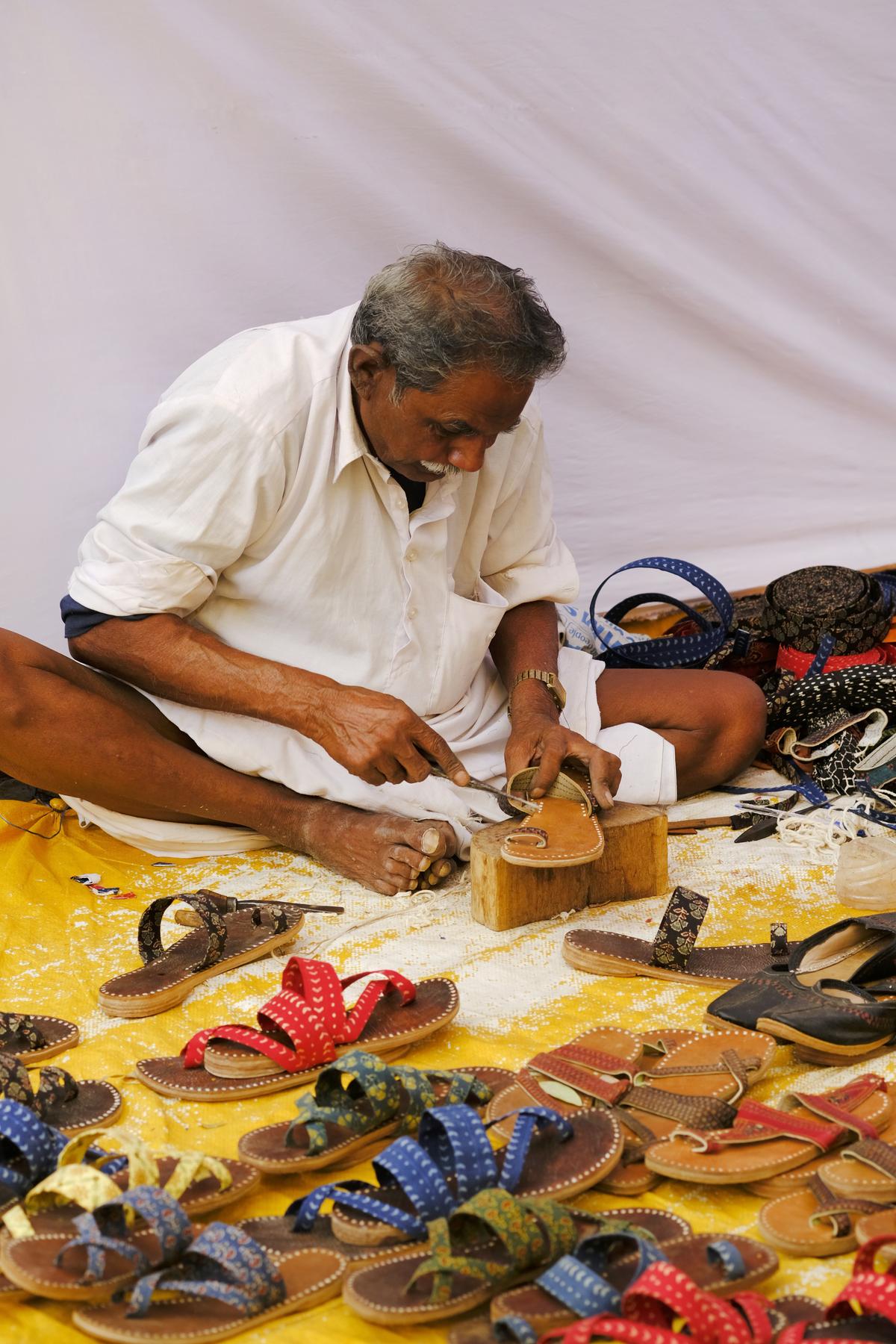
A traditional shoe maker making a traditional colourful shoes and slippers in Local Market.
| Photo Credit:
Getty Images
“The Kolhapuri chappal is famous world-over. Prada might have imitated the design, but no one can craft the exact shape and design like our artisans. It is impossible,” says Rajkumar. The Senapati Kapshi variant, for instance, is known for its intricate handwork and its price can go up to ₹5,000. “Only a few people are aware of this design and value it. If we get custom orders, we reach out to the handful of artisans who make the Senapati Kapshi and place orders,” he explains, adding that January to July is the peak making season as the monsoon season between August and November makes it difficult to work with leather.
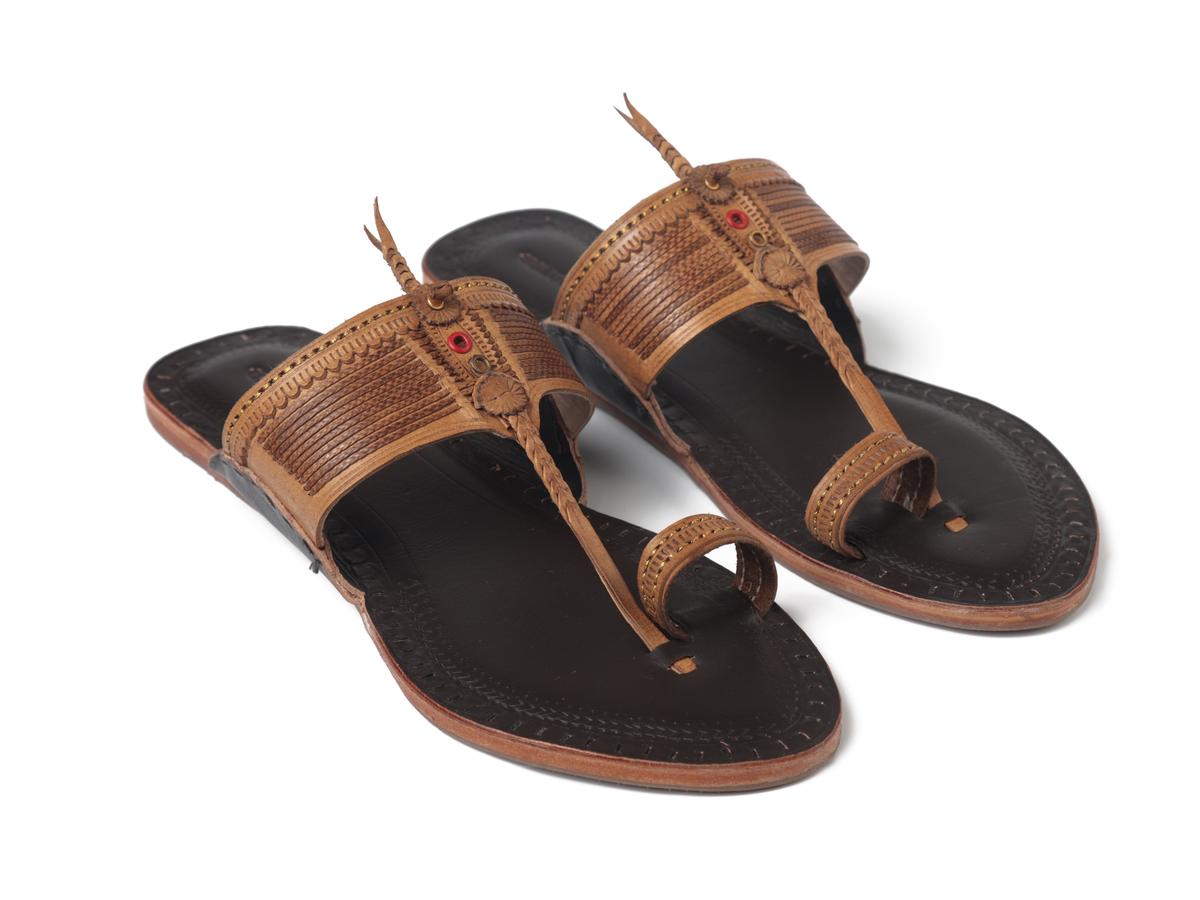
A design at Korakari. Photo: Special Arrangement
Contemporary upgrades
Over the years, to keep the craft relevant and edgy, a number of designers and brands have given the Kolhapuri chappal a contemporary spin. One of the firsts was Aprajita Toor, who launched her footwear label of the same name in early 2012. Her “obsession” with Kolhapuris, she says, started at home. “My mother had Kolhapuris in literally every colour, like a rainbow had walked into her wardrobe. I’d slip into them as a kid, strutting around like I owned the world. Clearly, the fashion bug bit early!” says the designer who has crafted versions of the traditional chappal into slip-on sliders, wedge heels, stacked heels, and pencil-thin soles with a range of embellishments.
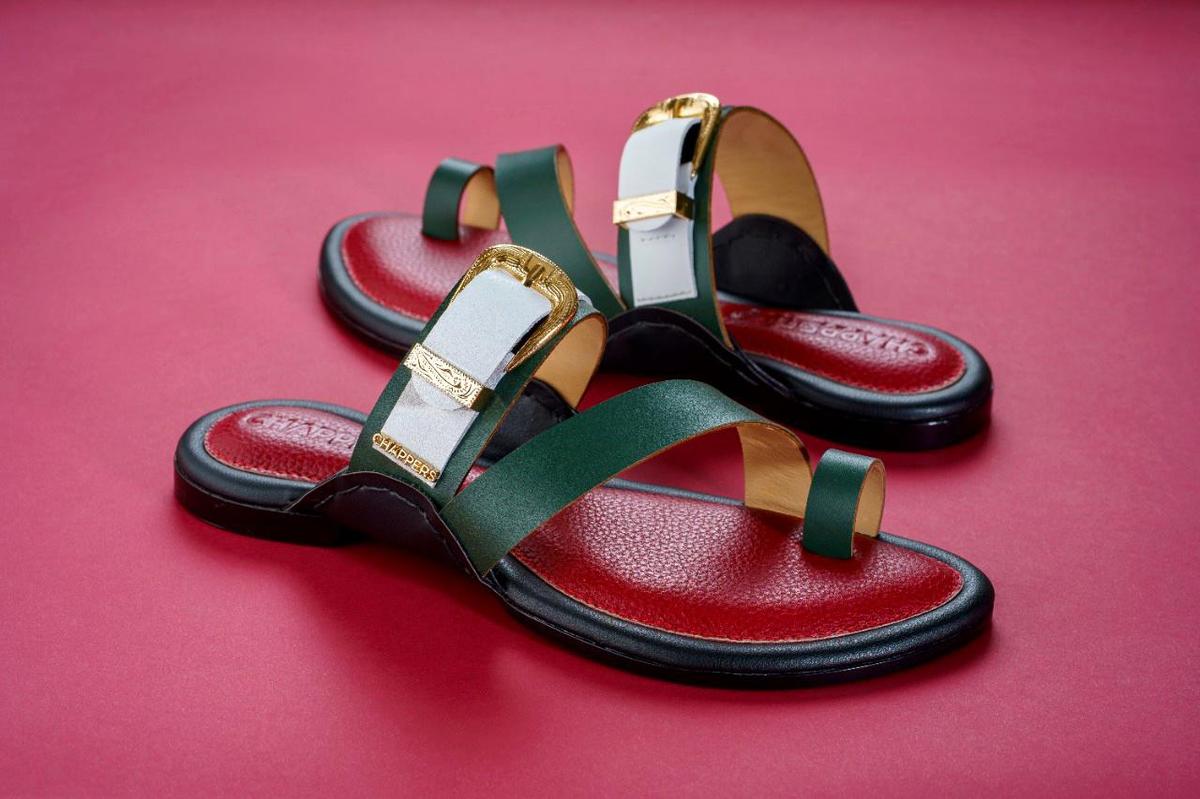
Footwear at Chappers. Photo: Special Arrangement
“Legacies don’t need reinvention, they need evolution,” she says, adding that her approach has always been rooted in “respect for the original form, but with an eye on the now”. “We introduced cushioned insoles for modern-day comfort, refined the silhouettes, and pioneered the use of varied heel forms, all while preserving the soul of the craft. It wasn’t about redesigning tradition, but about letting it evolve with the times that speaks across generations,” says Aprajita, who works with over 60 artisans in her Mumbai unit, and retails her creations upwards of ₹2,700 and they can go upto ₹7,000.
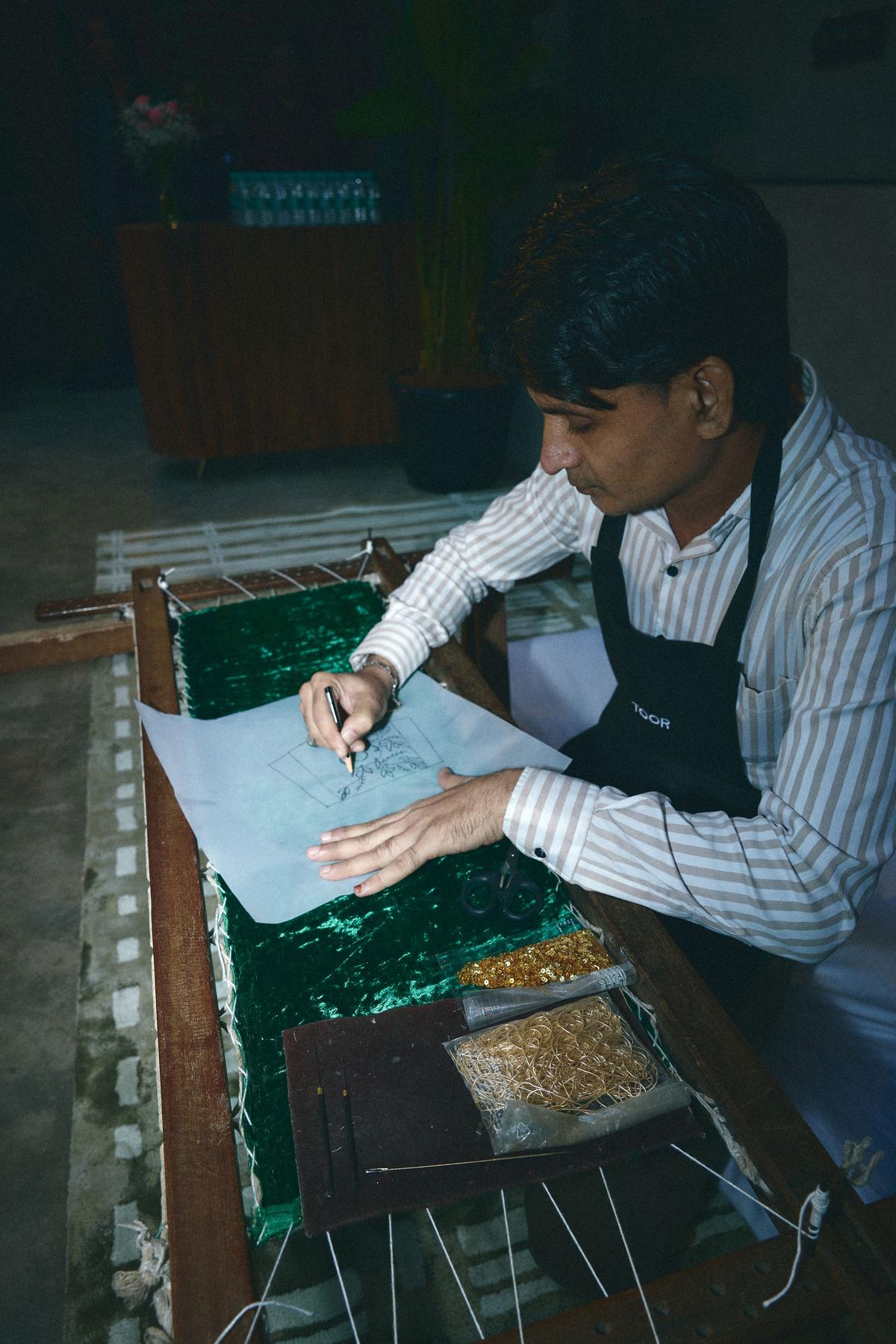
An artisan at Aprajita Toor. Photo: Special Arrangement
Pune-based Harshwardhan Patwardhan, 33, worked in his family’s transport business for a year before launching Chappers in 2015. “While I was studying Business Management in Nottingham, UK, I used to wear traditional Kolhapuri chappals and to my surprise, people always complimented them. That unexpected attention sparked an idea: why not reimagine these classic Indian sandals for a modern, global audience?” says the entrepreneur who has reimagined these classics with sleek silhouettes, vibrant colours, and tech enabled customisation. “We’ve introduced cushioned insoles and ergonomic footbeds, something traditional Kolhapuris didn’t offer. For durability, we’ve reinforced the soles with high-grade rubber that can withstand urban wear and tear.
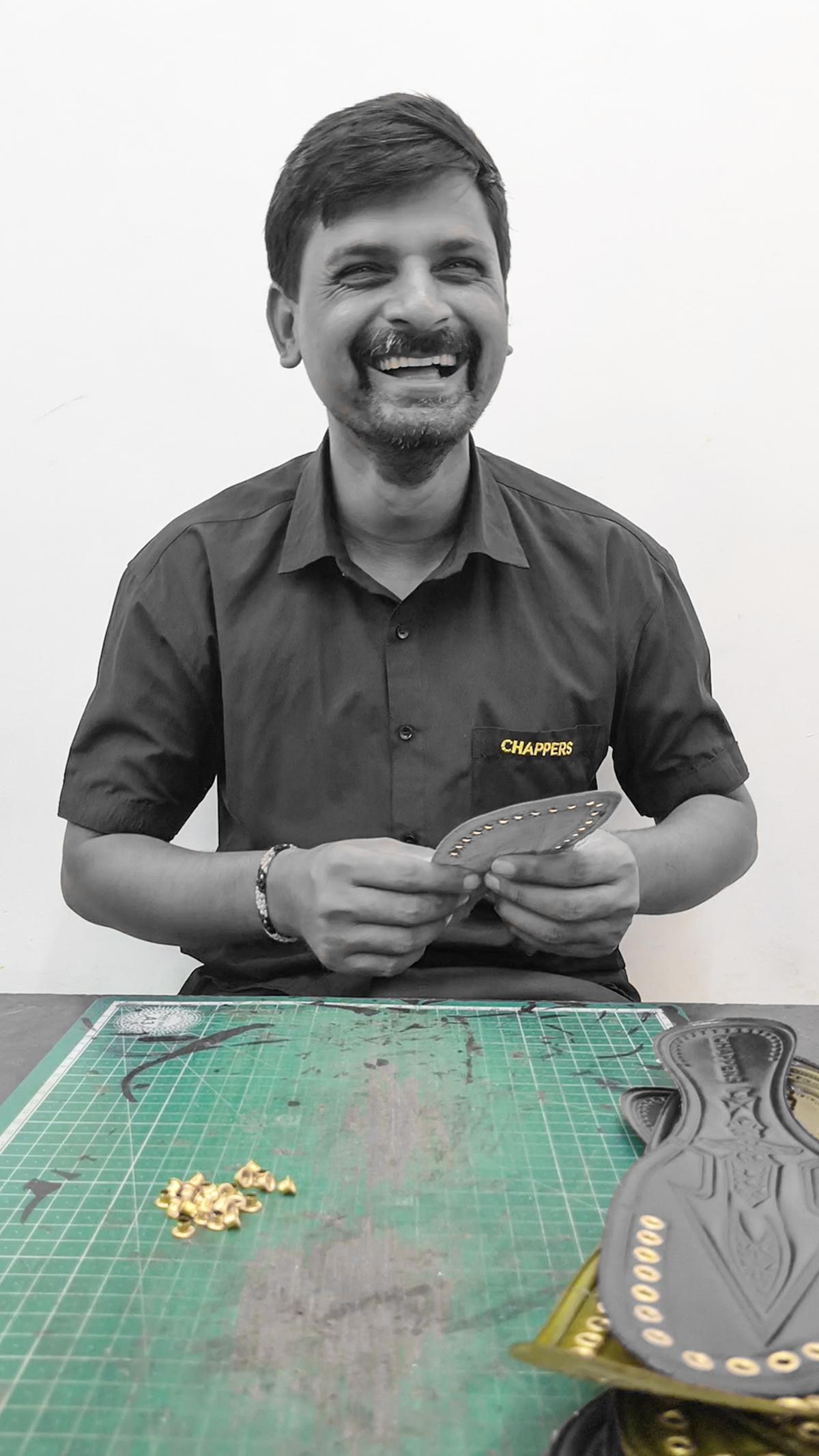
Umesh, an artisan at Chappers. Photo: Special Arrangement
Early days involved Harshwardhan travelling to Kolhapur to meet local artisans, studying leather craft, and sourcing materials from places like Dharavi in Mumbai. “Inspired by the Make in India movement, I tested the basic early prototypes myself, by walking long distances in them to ensure their durability,” he says, adding that each pair is made on order. Today, he works with over 50 artisans; half work at his in-house manufacturing unit in Pune. “Some artisans are from Kolhapur, some from internal parts of Maharashtra like Parbhani, Nanded, and a few from internal parts of Bihar and UP,” he explains.
Customisation is at the core of the brand, as he says it “not only keeps the craftsmanship alive but also makes every pair feel like a reflection of the wearer’s personality”. Harshwardhan has introduced touchscreen kiosks at their stores in Pune and Nashik so people can design their own footwear on the spot. His creations are priced upwards of ₹1,999 and go up to ₹25,000.
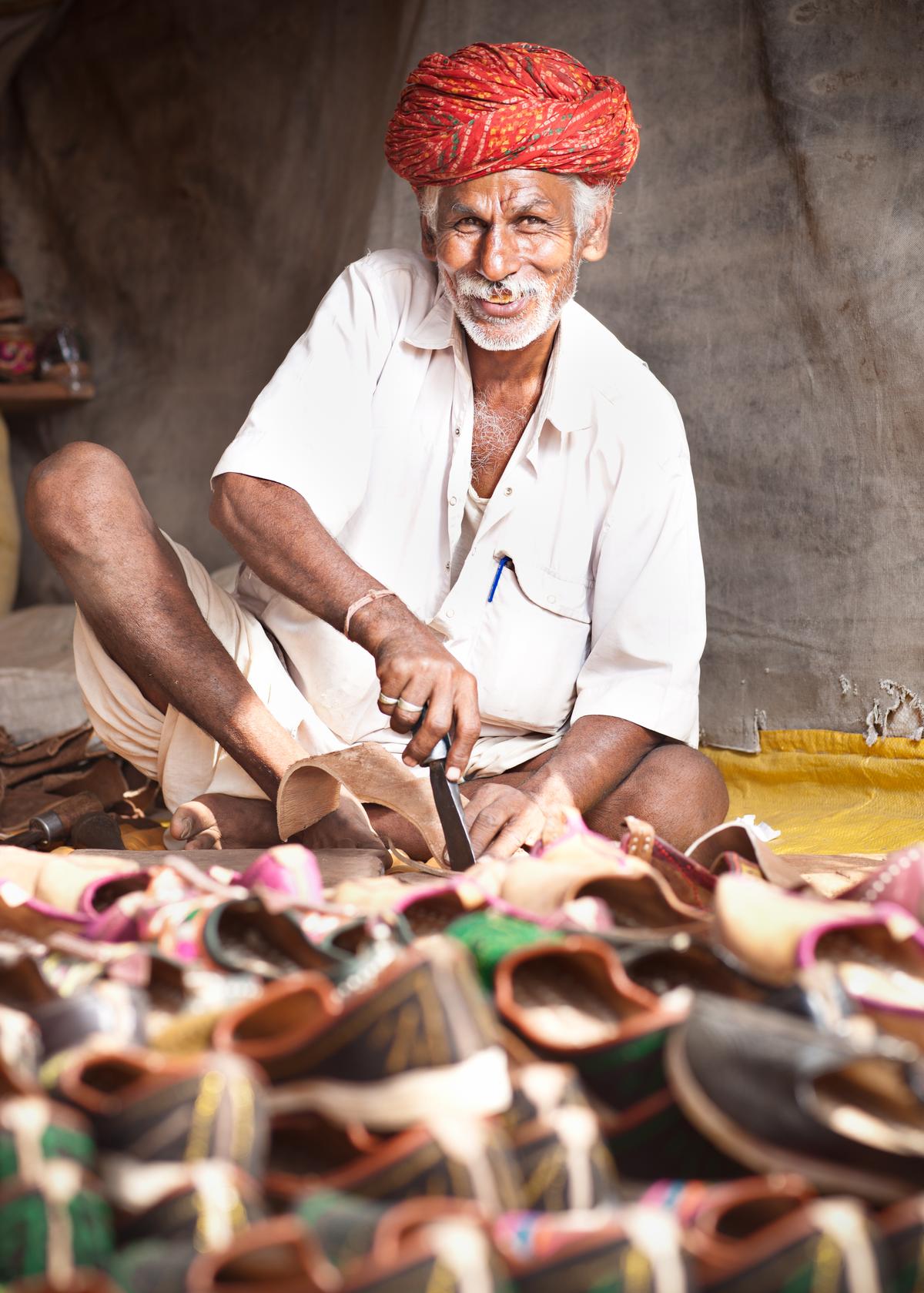
An artisan crafting footwear at Pushkar.
| Photo Credit:
Getty Images
Making a shift
Given, a majority of artisans in Kolhapur work from home, this is a largely unorganised sector. As Dileep points out, “Many artisans are stuck in debt traps, and there is no industry leader to set standards or work as a reference point.”
Harshwardhan adds that teaching artisans how to navigate design software, manage online orders, or even use smartphones for communication took time and patience. “Handcrafted products are, by nature, time-intensive and unique. Scaling up production while preserving that handmade charm was a delicate balancing act. Initially, even convincing customers that Kolhapuris could be both fashionable and comfortable wasn’t easy. It took storytelling, design innovation, and a lot of footwork literally to shift that perception,” he says.
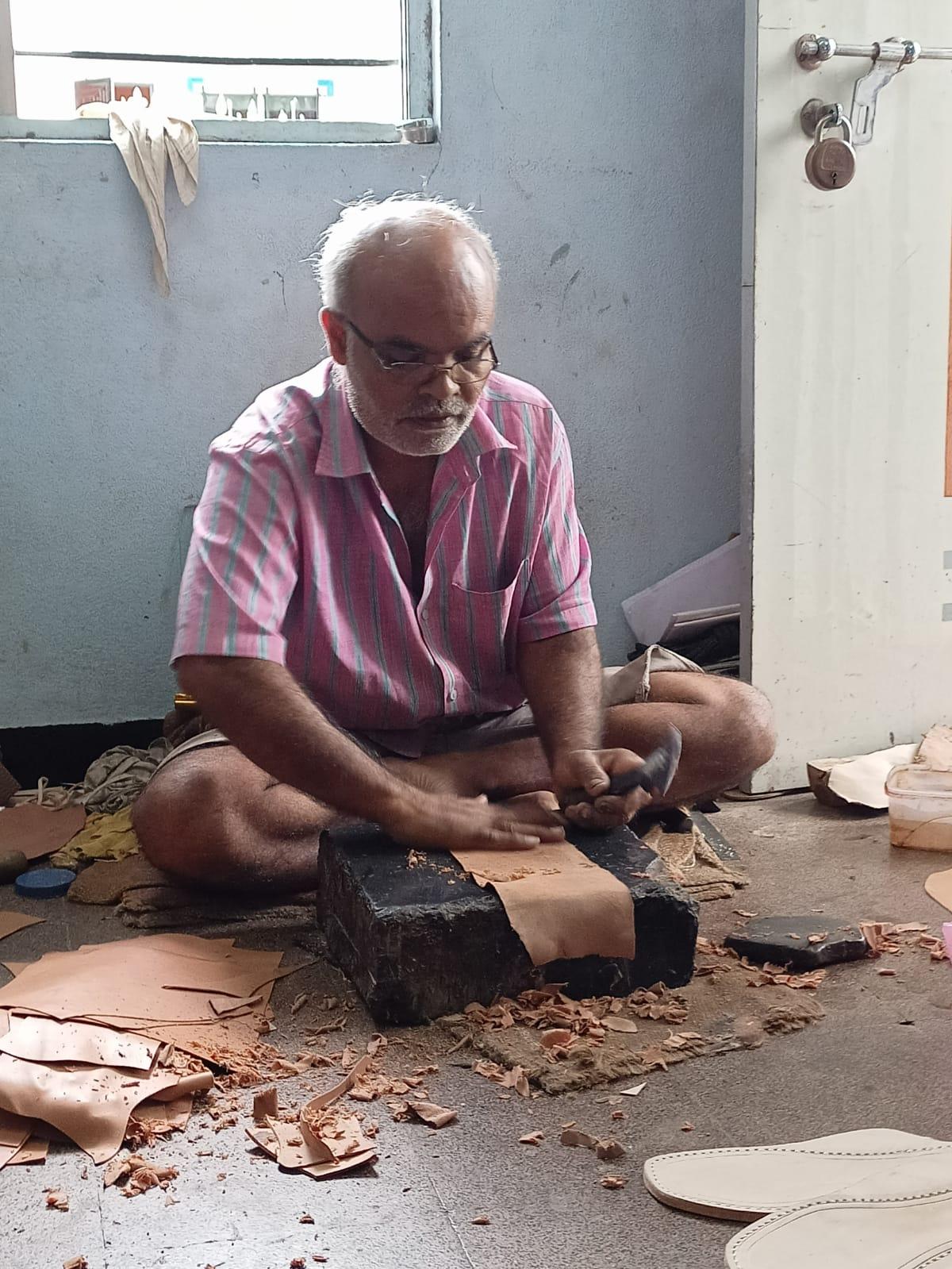
An artisan at Korakari. Photo: Special Arrangement
As for their runway moment, Harshwardhan felt “a mix of pride and frustration”. “On one hand, it was great to see a piece of our heritage walk the global stage…these sandals, born in the lanes of Kolhapur and shaped by generations of artisans, had made it to Milan. That’s no small feat,” he says, adding, “But then came the sting: no credit, no context, no mention of India or the artisans. It felt like I’m watching someone else tell the Kolhapur story, but leaving its name out. Why not collaborate with artisans and tell their stories? Share the spotlight, that’s how we turn a runway moment into real cultural recognition.”

